When I use the Windows Media Player (New and Old), no sound comes out when I put on a movie, but on third-party Media players, the sound comes out normally? Please tell me if anyone has experienced this problem, and has found a fix.
If you've ever tried to watch a movie on Windows Media Player and found that there's no sound, you're not alone. Many users face this issue where audio performs well on other media players but not on Windows Media Player. This problem becomes a hassle, especially when you need your videos urgently.
In this guide, you'll learn common causes of Windows Media Player no sound problem. We will also provide four easy fixes to enable you to get your audio running once more.
In this article
Part 1: Common Reasons for No Audio in Windows Media Player
When Windows Media Player isn't producing sound, it can be confusing, especially when you expect to enjoy your music or videos without any issues. This problem could occur for many typical reasons.
🔇 Muted Volume: The most often occurring cause of no sound in Windows Media Player is probably a muted volume. This can occur should the system volume be lowered or if you unintentionally silence the player itself.
🎧 Incorrect Audio Device Settings: The sound might not play as it is being directed at the incorrect audio device. You won't hear anything, for instance, if you have headphones and external speakers connected yet the audio is set to play via another device.
💾 Corrupted Audio Files: Should the audio file itself be corrupted, Windows Media Player may not be able to playback sound. Incomplete downloads, file damage, or file transmission issues can all cause corruption ,which can cause skipping, distorted sound, or none at all.
🔄 Outdated or Missing Audio Drivers: Your computer needs audio drivers if it is to properly interact with audio equipment. Windows Media Player may not be able to play sound if these drivers are obsolete, absent, or malfunctioning.
⚙️ Software Glitches: Occasionally the problem could be Windows Media Player's own flaws or faults. These problems could throw off audio playback, producing no sound or other problems. Conflicts with other programs, internal mistakes, or recent software changes could all cause problems.
Part 2: 4 Solutions to Fix Windows Media Player No Sound Issues
There are a few easy methods usually able to address the problem if you find Windows Media Player no sound. These methods can help you diagnose and restore audio playback. Try these easy fixes:
Fix 1. Check and Unmute Volume Settings
The volume settings are among the first things to investigate when there is no sound. Accidental silence of the volume in Windows Media Player or on your computer is easy. Often the issue can be resolved immediately by making sure the player and system volumes are unmuted.
To check and unmute the volume settings:
- Open Windows Media Player.
- Look for the volume icon at the bottom of the player. Make sure the volume slider is up and not muted.

- Check your system's volume by clicking on the speaker icon in the taskbar. Ensure the volume is up and not muted.

Fix 2. Select the Correct Audio Output Device
Sometimes the sound problem results from incorrect audio distribution to the designated device. Having several audio devices hooked in, such as speakers and headphones, may cause this. Hearing the sound correctly depends on confirming that your system settings choose the right audio output device.
To select the correct audio output device:
- Right-click the speaker icon in the taskbar.
- Select Sound settings.

- Under Output, choose the correct audio device (speakers or headphones).

- Test the sound by playing a file in Windows Media Player.
Fix 3. Update or Reinstall Audio Drivers
Common causes of sound issues in Windows Media Player are either outdated or absent audio drivers. The computer cannot interact with audio devices without drivers, hence maintaining their current is absolutely vital. Changing or reinstalling your drivers will help to fix any corruption or out-of-date among them.
To update or reinstall audio drivers:
- Locate the Start menu. Right-click on it and select Device Manager.

- Expand the Sound, video, and game controllers section. Choose your audio device and right-click. Next, select the Update driver.

- Choose Search automatically for drivers.

- If updating doesn't work, choose Uninstall device, restart your computer, and let Windows reinstall the driver.
Fix 4. Reset Windows Media Player
If none of the other fixes work, resetting Windows Media Player could be beneficial. This procedure brings the player's settings back to their default condition, therefore resolving any potential causes of the sound problem. One good approach to have the player operating once again is resetting.
To reset Windows Media Player:
- Press Windows + R to open the Run dialog box.
- Type appwiz.cpl and press OK.

- Click Turn Windows features on or off.

- Scroll down and uncheck Windows Media Player, then click OK.
- Restart your computer.
- Go back to the same settings and recheck Windows Media Player, then click OK to reinstall it.
Part 3: How to Repair Audio If the Media Player File is Corrupt?
If you've tried everything else and still Windows Media Player has no sound, the audio file itself may be the cause. Player performance can be affected by corrupted audio files. It might cause everything from distorted sound to skipping to completely no audio at all. Thankfully, you can use a specialized tool like Repairit Audio Repair.
This useful program is meant to rapidly and effectively restore corrupted audio files. It lets consumers correct many kinds of corruption in audio files. This includes file damage, incomplete downloads, or other problems included. Among the several audio formats Repairit supports are MP3, WAV, M4A, and others. For many kinds of media files, it makes it rather flexible.
Step 1. Go to the Repairit website and install it on your Windows. Open Repairit and go to More Types Repair. Choose Audio Repair.
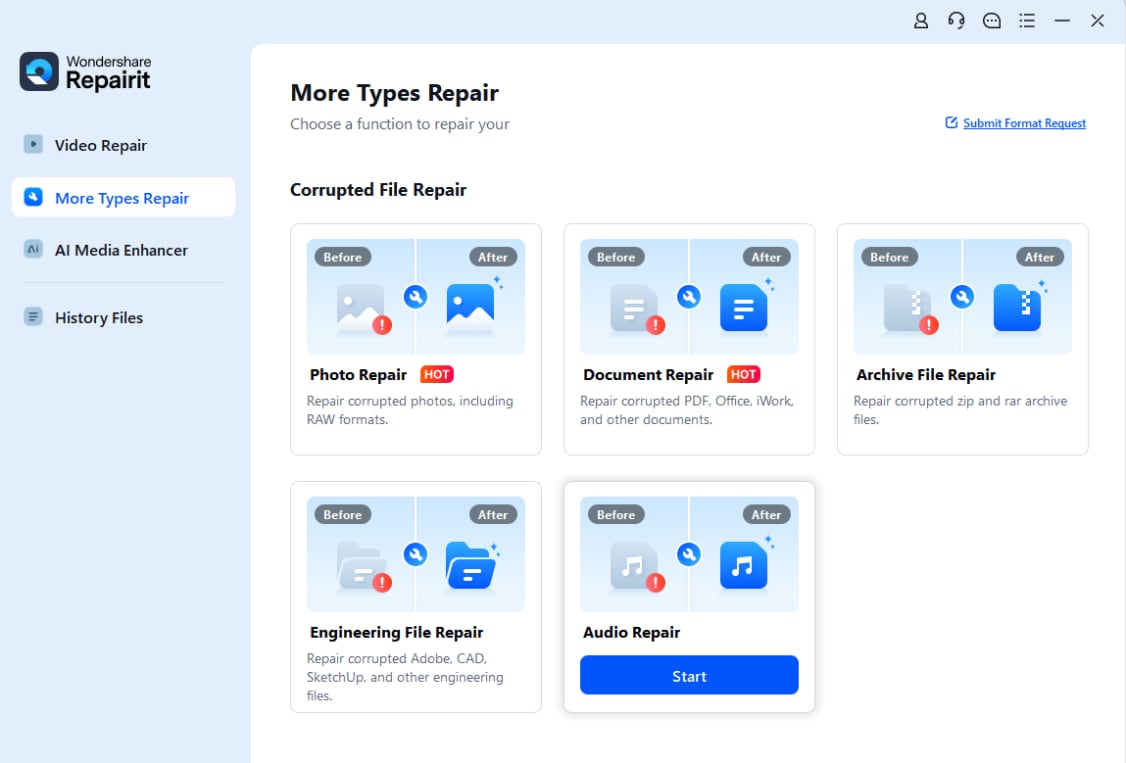
Step 2. Click on the +Add button and select your corrupt audio file.
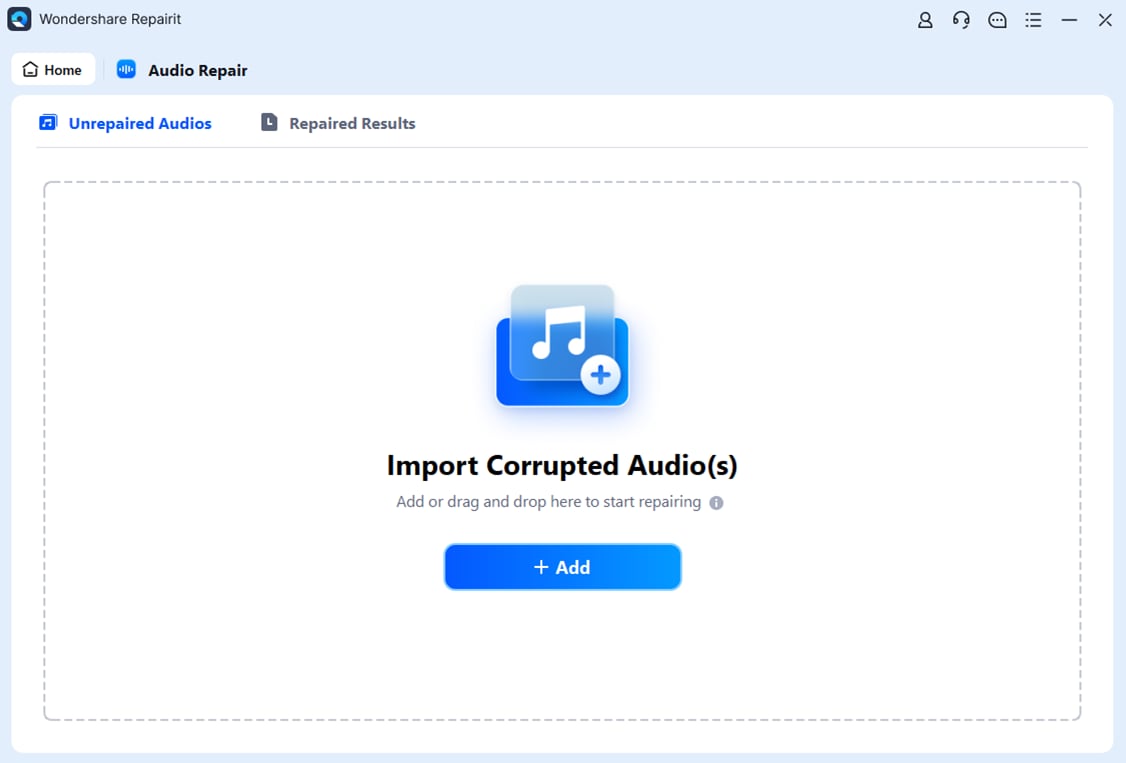
Step 3. Press the Repair button.
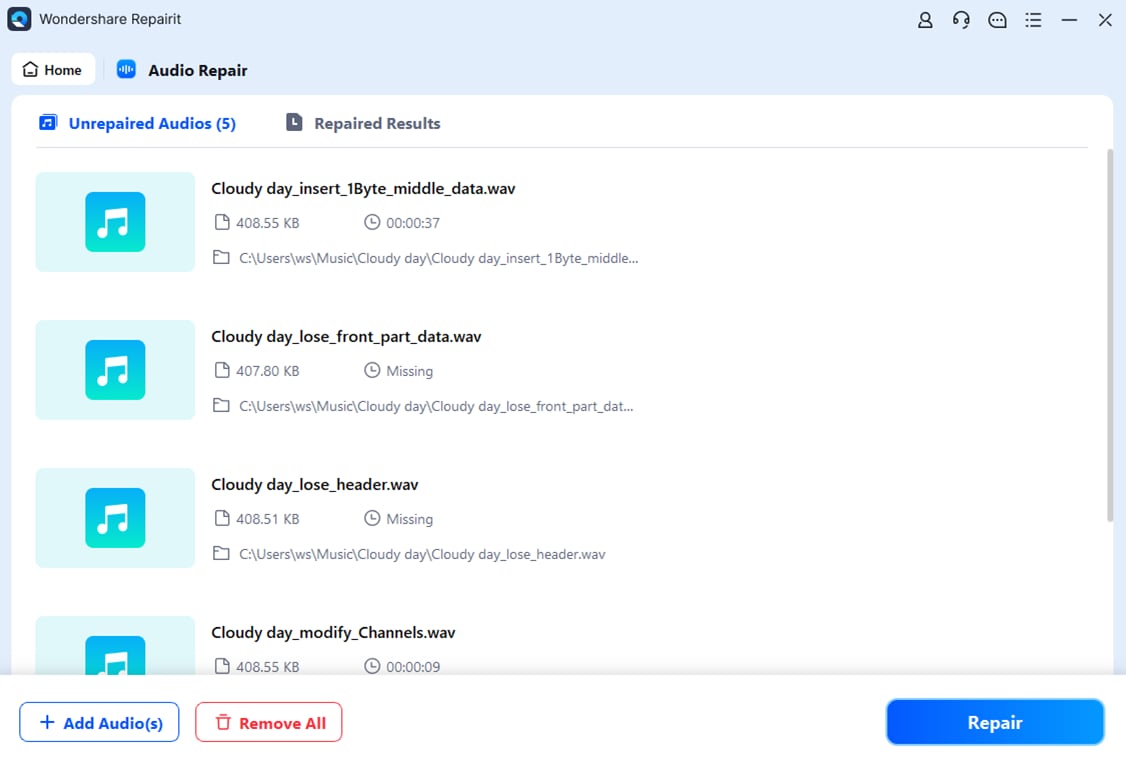
Step 4. Add a sample audio and start.
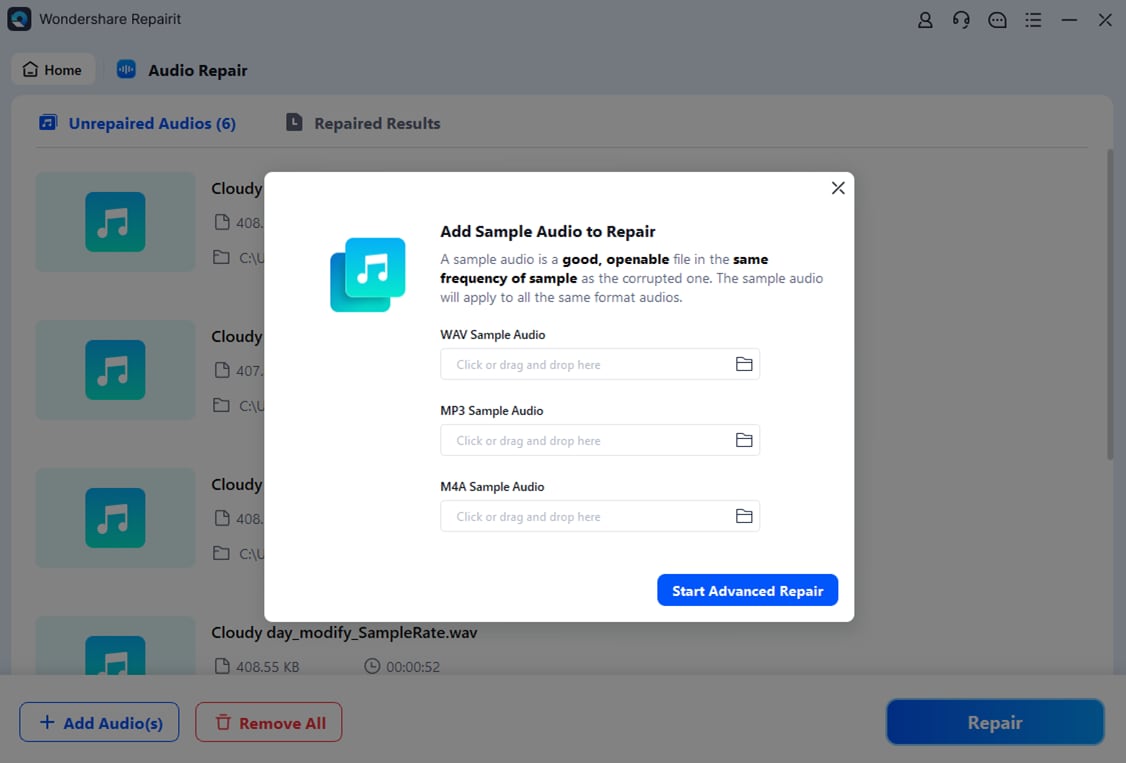
Step 5. Once done repairing, preview your file and Save it to your target folder.
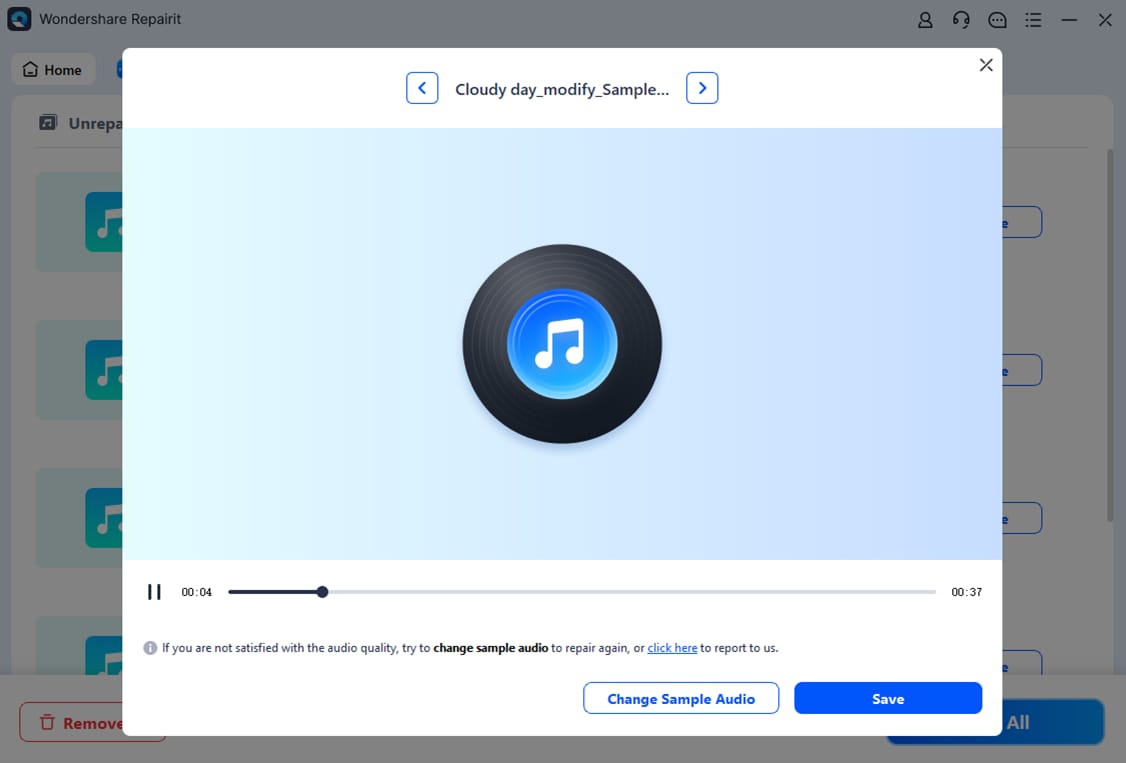
Repair Audio If the Media Player File is Corrupt

Conclusion
I understand that no audio in Windows Media Player is annoying. But, following the correct steps usually makes it simple to fix. These easy fixes, which range from adjusting your audio drivers to checking your volume settings, can instantly restore your audio. Additionally, Repairit Audio Repair helps restore a corrupted audio file so that your sound will once more be operational. Use our tips to resolve the problem so you may enjoy your music and videos without any interruptions.
FAQ
What should I do if the correct audio device is not selected?
The incorrect audio device is most likely the reason the sound is not coming through your chosen headphones or speakers. Visit the sound settings of your system to correct this; you will find a list of linked audio devices there.Can using headphones or external speakers cause sound problems?
Yes, if the audio output of headphones or external speakers is configured to the incorrect device, sound issues could result. You won't hear anything through the headphones. For example, if you plugged in headphones but the sound is still set to play through your computer's built-in speakers.Why do some files play with sound while others don鈥檛?
Variations in the audio format or corrupted files could be the causes of certain files playing sound while others not. Windows Media Player may not completely support some audio formats or the required codecs. Corrupted files might also feature compromised audio data, which causes playback problems. Furthermore consider converting unsupported formats to a more compatible one.


 ChatGPT
ChatGPT
 Perplexity
Perplexity
 Google AI Mode
Google AI Mode
 Grok
Grok

